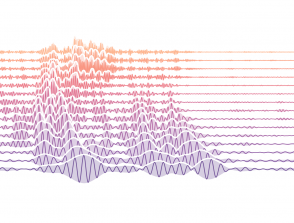Numerical modeling of dry and water-laden gravitational flows for quantitative hazard assessment
Start: 01 October 2017
End: 04 February 2021
Supervisors :
Anne Mangeney, Gilles Grandjean
Related teams :
Sismologie, Seismology
Status: Defended
In this work, we assess the possibility to use empirical thin-layer models to enhance propagation hazard estimation for gravitational flows. Thin-layer equations model the propagation of a flow on a topography and give its thickness, and its depth-averaged velocity. We test the SHALTOP numerical model with an empirical rheology described only one or two parameters, in order to facilitate its operational use. This approach is thus easier to use and computationally cheaper than models simulating the dynamics of each solid or fluid particle, and allows to model the dynamics and the geometry of the flows more finely than purely empirical models.Three research issues are considered in this work. We first highlight the importance of a detailed description of the topography curvature, even with simple rheological laws. Topography curvature can indeed have a significant influence on the dynamics of rapid gravitational flows. It should thus be properly taken into account to calibrate correctly the models and estimate more precisely overflow hazards.Then, we test the feasibility of using SHALTOP for propagation hazard quantification in two case studies. We first consider debris avalanches on the Soufrière de Guadeloupe volcano (Guadeloupe, Lesser Antilles), and then the combination of rock avalanches and subsequent debris flows in the Prêcheur river (Martinique, Lesser Antilles). In both cases, we use a wide variety of data (topographic, geophysical, geological, geomorphological, seismic, …) to constrain simulation scenarios, calibrate the model and study potential future events.Finally, we propose a methodology to estimate, thanks to numerical simulations, landslide travel distance as a function of destabilized volume. The resulting power law is site-specific. It is derived through a statistical analysis of a site-specific simulation database, with various volumes and rheological parameters. Through three case studies, we show that such a power law is associated to smaller uncertainties in comparison to purely empirical estimations, and models more accurately the dependence between the volume and the travel distance.In the short term, this work contributes to adapt and test SHALTOP to allow its operational use for landslide hazard assessment. In the long term, our work contributes to enhancing landslide hazard maps and numerical tools for crisis management, by replacing purely empirical approaches by physically-based models. In this context, some scientific problems remain to be tackled, as the spatialization of uncertainty and the adaptation of models depending on the scale of the study (identified landslide, mountain slope or watershed).





